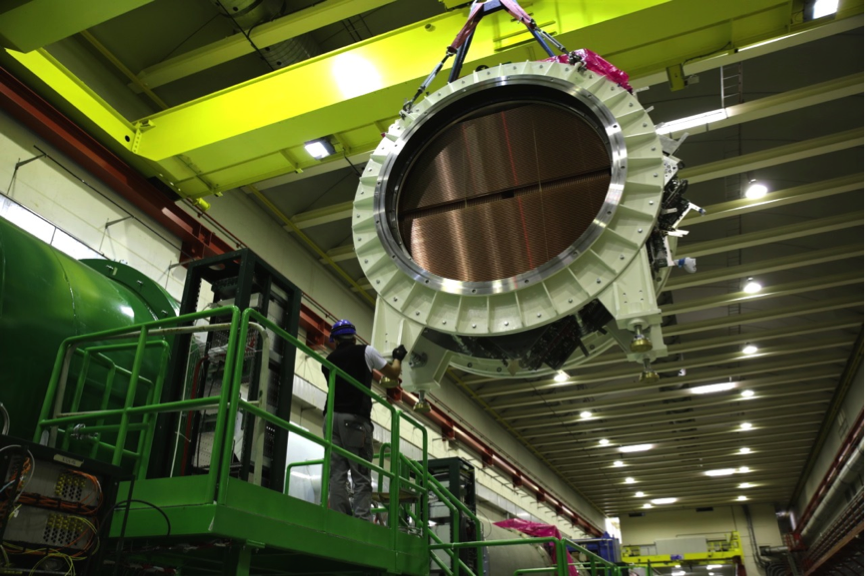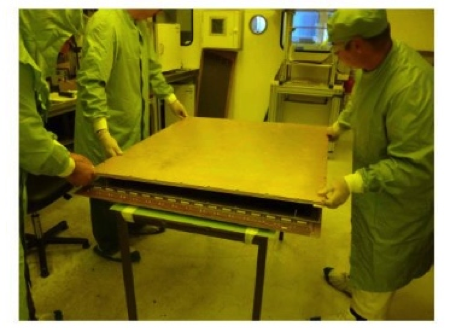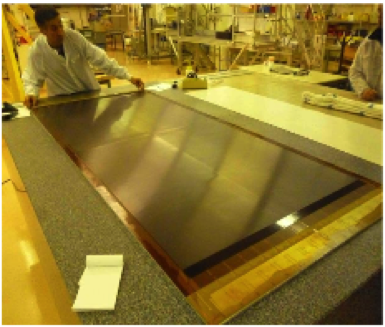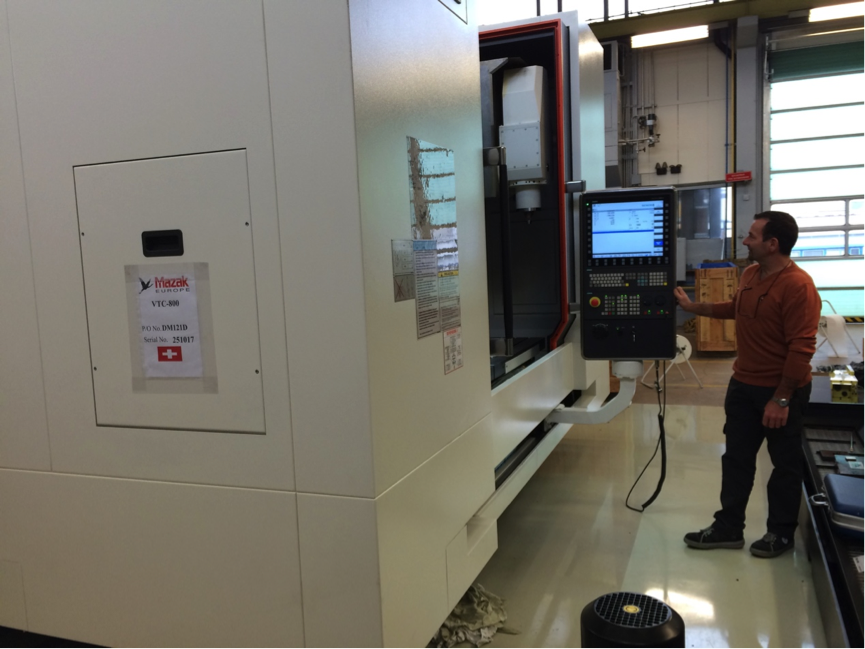A successful year for the PH-DT group
In 2014 DT has been engaged in an extensive programme, supporting and finalizing the consolidation and maintenance work for various experiments at CERN, as well as for the users community. This year was equally difficult and successful.
LS1 activities for the LHC experiments have been varied and intense in both the detector and the infrastructure consolidation fronts. New, state of the art safety control systems for many of the large experimental magnets have been developed and installed. Detector gas systems have been improved to adjust to the new operational requirements and also to resulting in reduced costs for the experiments: CF4 recuperation plants and closing gas loops were used where possible and an intense leak searching and detector repair campaign have been achieved. Novel CO2 cooling plants have been installed in ATLAS and CMS. In ATLAS, the CO2 plant is fully operational and maintains the Insertable B-layer (IBL) sensors at the appropriate temperature for different operating states (-30 oC to +20 oC).
DT teams worked throughout the year in close collaboration with the four LHC experiments to improve some detector systems (e.g. LHCb RICH, ATLAS TRT, TOTEM, CMS Tracker) and contribute to Phase0 detector upgrades (e.g. ATLAS IBL and CMS PLT). Linked to all these projects, DT has provided centralized engineering support and expertise, as well as specialized workshops and facilities to design, manufacture, and test prototype detector components, focused on LHC projects.
Support to the completion of the NA62 infrastructure and baseline detector systems has been an important activity of DT during 2014. The experiment has been taking exciting data since October and for instance a remarkable performance of the four planes of the ultra-light straw chambers has been measured. The GigaTracker modules use for the first time DT-designed micro-fabricated ultra thin silicon micro-plates directly bonded on to the sensors for localized cool down.

Last straw detector module being installed in the NA62 experimental hall.

GTK module with micro-channel cooling plates being inserted in the NA62 beam line.
The DT irradiation facilities team has been involved in the upgrade projects of both the PS East Area irradiation facilities (IRRAD) and the new Gamma Irradiation Facility at the SPS North Area (GIF++). Both facilities are in an advanced stage of commissioning and routine irradiations campaigns will start in 2015.

Family picture of the EN, PH department and supplier of the gamma irradiator teams after completion of the GIF++ facility at the SPS North area in December 2014.
Since the beginning of 2014, the CERN PCB workshop located in Bldg. 102 that was part of the Technology (TE) Department till that date has been integrated in PH-DT. The name of the group has changed to Micro-Pattern Technologies (MPT) Workshop, as it was smoothly integrated into the PH department. The workshop activity is more directed towards prototyping and production of detector components and detector R&D.


Left, large area micromegas detector being closed in the MPT workshop clean room. Right, assembly of a micromegas detector prototype for the ATLAS New Small wheel project.
The group has also pursued R&D on detector technologies for the interest of the overall HEP community. About 10 fellows and students work on different aspects of the DT R&D detector programme. The Solid State Detector (SSD) team is developing radiation tolerant silicon sensors for the vertex and tracking detectors for the luminosity upgrade of LHC. For example, following a request of the CMS High Granularity Calorimeter project, DT participates in the evaluation of highly neutron irradiated silicon sensors and could provide valuable input for the ongoing evaluation, regarding the choice of the CMS forward calorimeter concept. The SSD team also contributes to several projects within the RD50 Collaboration, such as the study of Low Gain Avalanche Detectors (LGAD) as tracking devices in high radiation environments and/or fast timing applications.
The PH-DT Gaseous Detectors R&D team continues playing a major role in the RD51 Collaboration, focusing on the promotion and development of the Micro-Pattern Gaseous Detector (MPGD) technologies. The team actively supports the developments for the LHC experiments, in particular Micromegas for the ATLAS New Small Wheels, ALICE GEM-TPC upgrade, and GEMs for CMS high-eta proposal.
DT also contributes to detector development for the Linear Collider Detector (LCD). The group has simulated, built and tested a one-to-one mockup made of lightweight carbon-fibre composite ladders in a small-scale wind tunnel to validate the mechanical infrastructure and cooling model for the vertex detector of the CLIC_ILD detector concept.


Top: FEA simulation of air-cooling in the CLIC Vertex geometry. Bottom: 1:1 mockup of the Vertex detector inside a custom-made wind tunnel used to validate the thermo-mechanical aspects.
DT members have participated to conferences worldwide and delivered technical training seminars for DT peers. DT has also conducted training sessions on detector hardware at international instrumentation schools, such as ICFA Instrumentation School in Danube and the ESIPAP at CERN.
A smooth but solid consolidation of the DT technical infrastructure has been launched, with the aim of facing the technology challenges ahead; a new composite lab has been set up, producing prototypes of C-fiber structures for the CMS future tracker and LCD Vertex. In less than a year, the recently acquired 3D printer has produced several hundreds of pieces accelerating the R&D feedback loop in several projects, and produced parts now installed in the LHC experiments. In addition, a new state of the art, 5-axis CNC machine has just been installed in the DT mechanical workshop in B.108. It has an exceptional manufacturing capacity and 2 m long working area, providing infinite possibilities as to the shapes and sizes that can be effectively processed.

New CNC machine being commissioned in the PH-DT mechanics workshop B.108
The DT group, thanks to the vast range of activities, infrastructure, expertise, and long-standing collaborations with CERN experiments, can provide centralized resources and expertise, in terms of personnel and facilities, for the development of future detector technologies, R&D and can contribute to detector construction projects. Moreover, specific partnerships for Phase 1 and 2 detector upgrades have been settled with CERN teams in the LHC experiments, in particular with ALICE and LHCb, where DT contributes to several challenging detector upgrade projects. Finally, agreements for engineering and detector prototyping support for the ATLAS and CMS detectors, and general support to the CERN neutrino platform activities at CERN, have started and will significantly ramp up in 2015.
